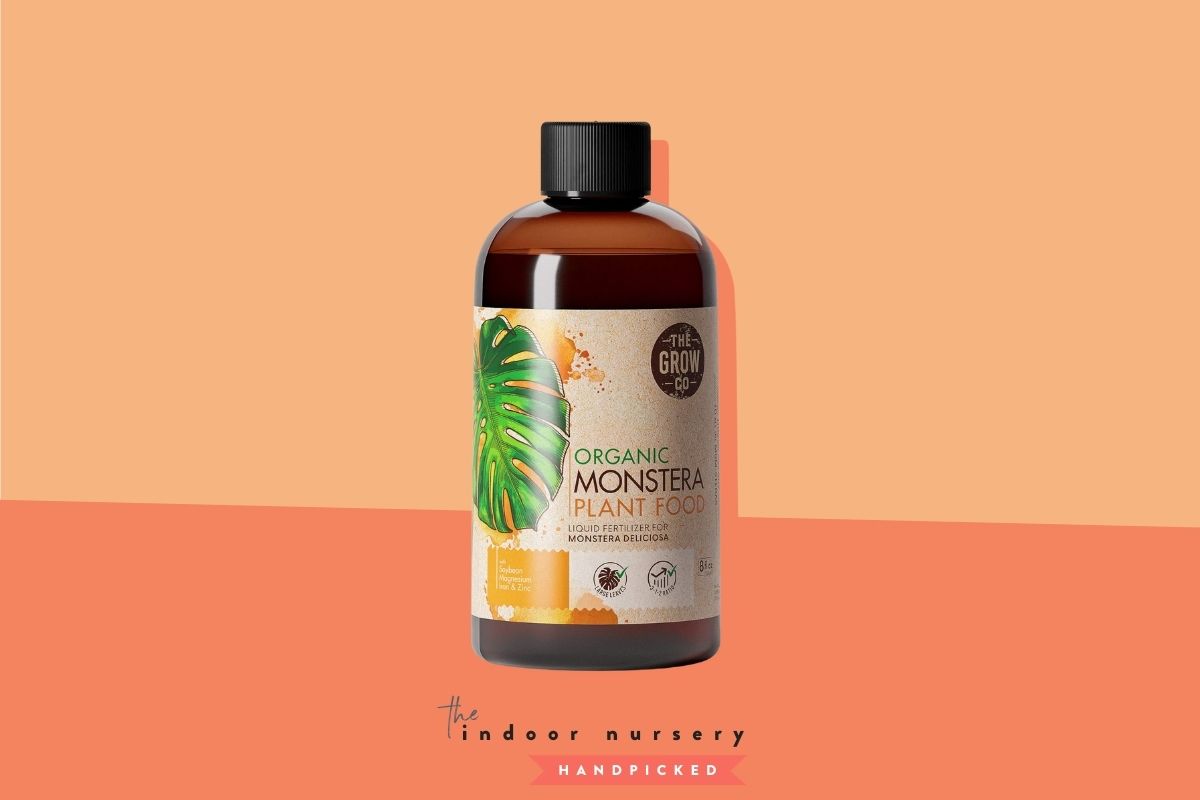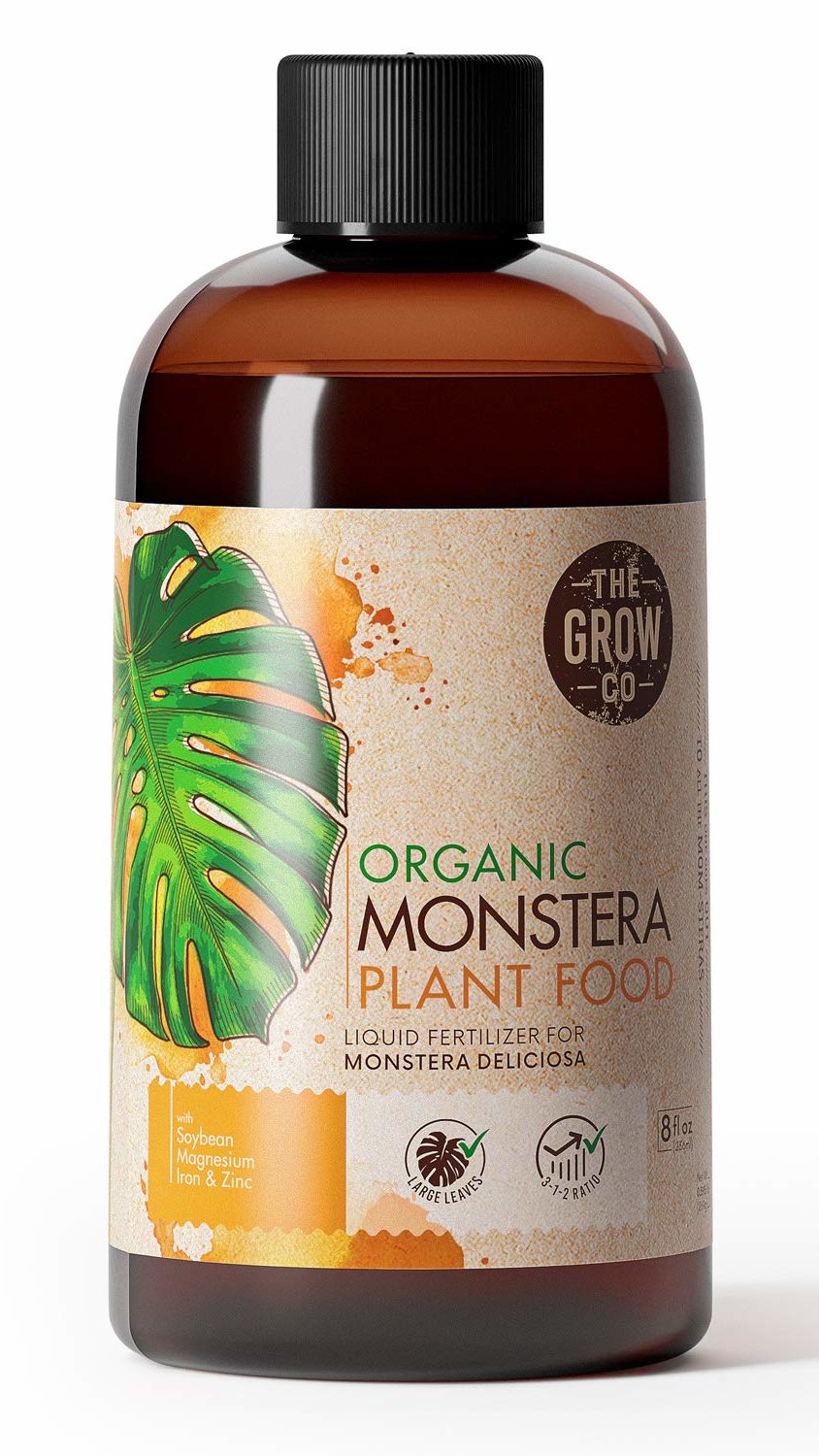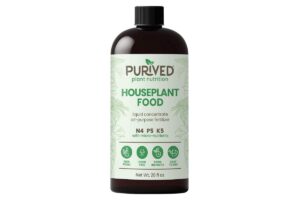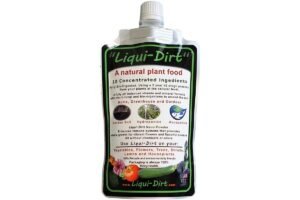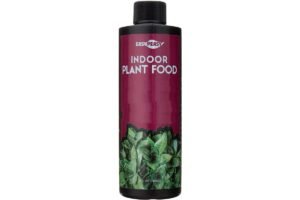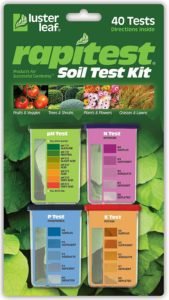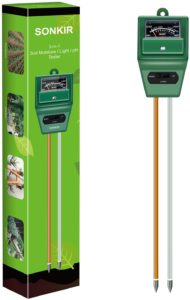Do you get excited every time you see one of those vibrant-green flutes emerge on your monstera, promising a new leaf is on the way?
We do too 🤩
If you choose the best fertilizer for monstera, you’ll ensure that all of your monstera’s leaves, old and new, stay healthy and beautiful. Monstera plants loooove a good dose of fertilizer during their growing season.
Not only does fertilizer support glossy, green leaves, but it also enables the plant to produce more leaves and maintain the lacy leaves that they’re famous for. Giving your monstera the right amount of fertilizer during its growing season will keep it full, vibrant, and healthy throughout the year.
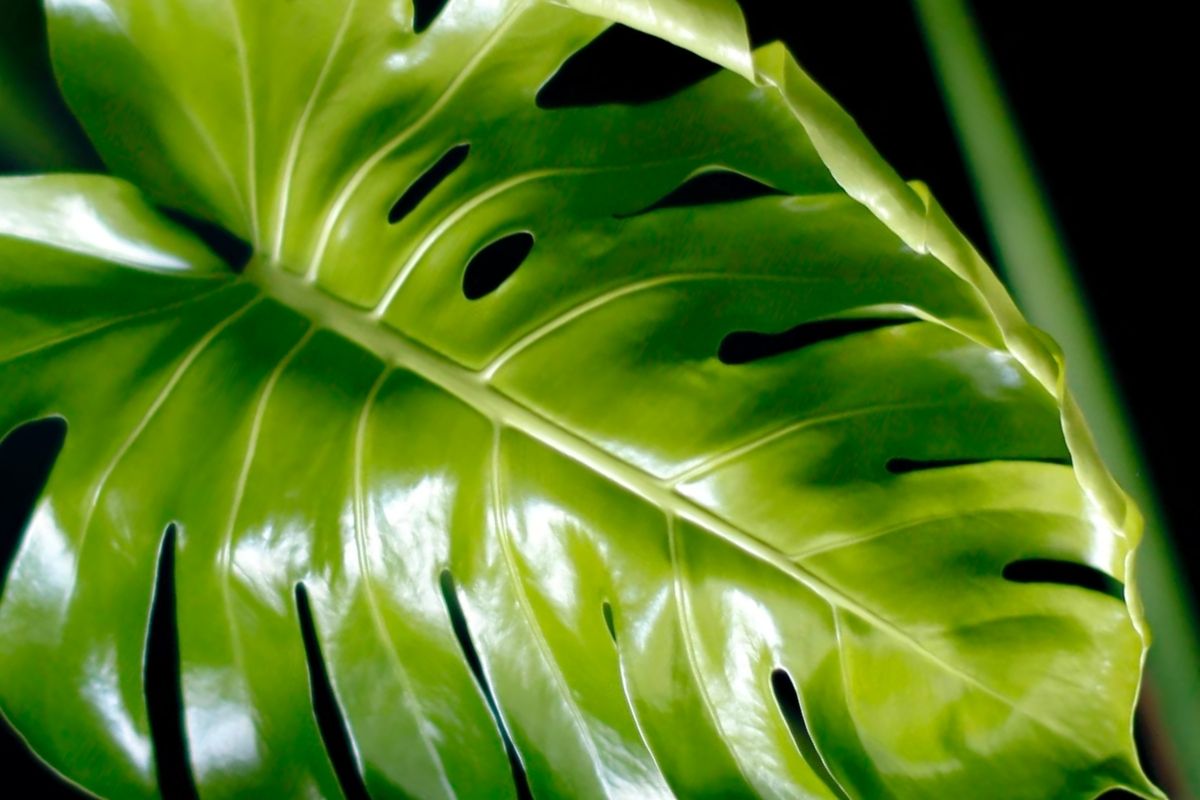
What to look for in a Monstera plant fertilizer
Monstera Deliciosa is a vining plant native to the rainforests of Central America. They’re loved as indoor plants particularly for their unique, hole-y leaves (in the rainforest, the holes allow rain to pass through the leaves and keep them from tearing in a heavy downpour) that form as the plants mature.
These large leaves can grow to a diameter of up to 2 feet in the wild. Indoors, you can achieve healthy growth by providing your monstera with lots of indirect light, good soil (the best soil for monstera is well-draining and aerated), and, of course, the right amount of fertilizer in the spring and summer.
As a potentially huge plant with lots of leaves, monstera needs a fairly broad nutrient profile. All houseplants need fertilizer at some point, especially plants that have abundant foliage to nourish.
Potting soil comes with some nutrients, but as plants grow, they absorb the vitamins and minerals that they need and deplete the soil.
In nature, bioactivity in the topsoil and nutrients in rainwater make essential nutrients readily available to hungry plants like monstera.
At home, we need to replenish our potting soil regularly with vitamins and minerals to keep our plants healthy! The best fertilizer for monstera will provide these vital nutrients. You can find specific plant food for monstera like this one that we recommend:
The best fertilizer for Monstera plants
If you have many plants to feed at home though, you might be looking for a one-and-done solution. The good news is that most all purpose fertilizers will be able to give your monstera the nutrients it needs to thrive.
These fertilizers contain the main macronutrients and micronutrients all plants need. The main three are nitrogen (N), which helps the plant make chlorophyll; phosphorus (P), which supports strong roots and leaf production; and potassium (K), which helps the plant grow healthy cells and tissue that retain moisture. You will see this listed as the NPK ratio.

All soils contain these in different proportions in nature, and plants are adapted to more or less of each. Monstera plants, growing in nutrient-rich jungle soil, will appreciate a good balanced fertilizer once a month on average in the growing season. These are some of our readers’ favorites:
Types of monstera plant fertilizers
There are many kinds of fertilizers out there that can be used to nourish your monstera. Liquid, granular, slow release, synthetic and organic fertilizers each have their advantages and will keep monstera well-fed.
Liquid fertilizers (the best fertilizer for Monstera plants)
Liquid fertilizers are a great way to provide your monstera plant with consistent fertilizer throughout the growing season.
By adding a half or quarter strength amount to your monstera’s regular watering schedule in spring and summer, you can apply liquid fertilizers more frequently than solid fertilizers because they’re made to deliver nutrients immediately, and will rinse out of the soil more quickly than other types of fertilizer.
Liquid fertilizes come in synthetic and organic forms. Synthetic products are concentrations of pure (usually macro-) nutrients, and can be supplemented with a micronutrient booster product if necessary.
Organic liquid fertilizers, like fish-based fertilizer, contain lots of micronutrients in addition to the main macros. Organic fertilizers in general are minimally processed and have a very organic odor, so they should be applied outdoors if possible.
Slow release fertilizers
Slow release fertilizers can include both organic and synthetic fertilizer types. Organic fertilizer naturally takes longer to break down and become available since it needs to be decomposed by the soil’s bioactivity. Slow release synthetic fertilizers are formulated to break down and release over time, usually by a protective coating that dissolves at a certain rate over waterings.
Slow release fertilizer only needs to be applied once or twice a year, depending on the size of the plant and rate of absorption.
Larger plants will need more fertilizer than smaller ones, but the individual needs of your plant should be verified by a soil test before putting new fertilizer down to avoid over-fertilizing the plant.
Granular fertilizers
Granular fertilizer comes in organic and synthetic formulas, and while they are released more slowly than liquid fertilizer, they don’t stay in the soil quite as long as slow release types. Granular fertilizer is applied to the top of the soil, then watered in to dissolve and become available to the plants.
This dry, solid form has a longer shelf life than liquid or organic fertilizers, an advantage because you won’t feel pressured to use it up quickly. In addition to being applied dry, granular fertilizers can be dissolved in water to apply as a liquid.
How often to fertilize monstera plants
As a tropical plant, monstera can grow year-round in the right light and temperature conditions. For many indoor monstera plants, however, the cooler fall and winter months (if you’re living away from the equator) mean dormancy – this is chill time for your sleeping beauty, and because monstera doesn’t produce many leaves in this period, they don’t need fertilizer.
During the growing season, however, you should feed your monstera about once per month.
Spring
The spring growing season is the best time to fertilize monstera. Fresh from its long nap, your monstera is reawakening from dormancy and beginning to actively absorb nutrients again. Check the soil profile with a nutrient and pH test before applying fertilizer to be sure of how much the plant actually needs.
Checking once in early spring and once in early summer to monitor the nutrient content will keep you on top of your monstera’s growth. With enough indirect light, your monstera will grow quickly and absorb nutrients more quickly than you might expect.
Summer / fall
As a tropical plant, monstera plants are used to long daylight hours. During the bright, long days of summer, your monstera plant is actively growing. When that daily period of sunlight grows shorter, the monstera’s growth will reduce and it will start to conserve its energy and slow down nutrient absorption.
For this reason, fertilizing in early or even midsummer will keep your monstera happy, but as fall approaches, you shouldn’t apply fertilizer, especially slow release formulas that will last through the plant’s dormancy.
Winter
Sleepy time for your monstera! Even if you have a huge plant, it won’t be absorbing nutrients during the winter. It survives on stored nutrients and very slow absorption of water from the soil. You should avoid fertilizing in the winter not only because your plant won’t absorb the nutrients, but also because excess fertilizer will damage your monstera’s roots.
Except in the case of organic fertilizers like compost or worm castings, solid fertilizers are often made with nutrient salts that can leech moisture from the roots, causing root burns if you go a bit overboard. Monstera roots can’t heal from the stress during dormancy, and you can easily damage them with the intent of doing good!
If you have the gardening bug and want to do something for your monstera, winter is a good time to clean the leaves of your monstera so it can absorb light as the days start to get longer and the plant reawakens. Over the year, the big, flat leaves will gather dust that can lightly interfere with their photosynthesis performance.
When you remove the dust (I recommend covering the potting soil with plastic wrap and popping the whole plant in the shower), the monstera leaves will be fresh and ready to absorb some of the plentiful (indirect) sunlight and warmer temperatures of early spring.
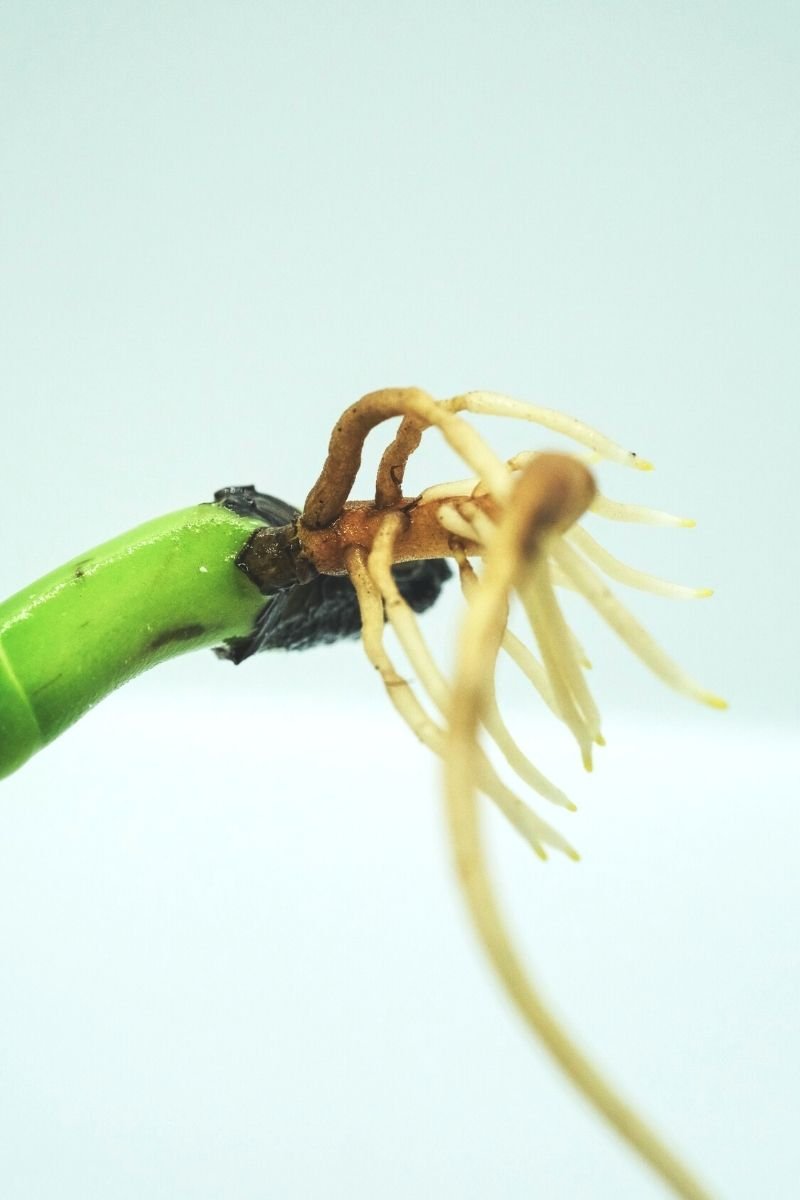
FAQ
How do I know how much fertilizer to give my monstera?
It depends on what type of fertilizer you’re using! Monstera plants have thin, shallow roots compared to their above-ground size. When it comes to fertlizing, this is important to keep in mind because monstera can’t absorb a large amount of nutrients at once and are easily over-fertilized. It’s best to distribute your fertilizer feedings evenly and consistently over time in coordination with your watering schedule to have the greatest effect. Organic and slow release fertilizers do the work of timing for you and will have clear dosing instructions, making them a good choice as long as you get the first feeding at the right time.
Is my monstera underfertilized?
There are a few tell-tale signs that your monstera is underfertilized. One of them A is a lack of, or less-than-numerous, holes and separations in your monstera’s leaves. A well-fed monstera will produce lacier leaves because it doesn’t need the surface area of a solid leaf to absorb energy from light. Young monstera plants typically have fewer fenstarations than mature plants because they don’t have many leaves to capture energy, so keep note of your plant’s age before deciding it’s under-nourished. Stunted growth, yellowing, browning, drooping, and leaf loss are other red flags that your monstera might not be getting enough nutrients.
More about fertilizing
- 10 Best Worm Composter Bins For Easy Homemade Compost
- Compost Starter 101: When You Need It And How To Make It
- Our top pothos fertilizer picks for luscious vines
- 5 reasons to use coffee as fertilizer for your plants
- Best fertilizer for Monstera plants for gorgeous leaves
- Fertilizer Burn on Plants? Here’s How to Fix it
- Fiddle leaf fig fertilizer: How to feed your fiddle leaf

